From cans and stones to thermal imaging sights. Tuning weapons in the SVO zone
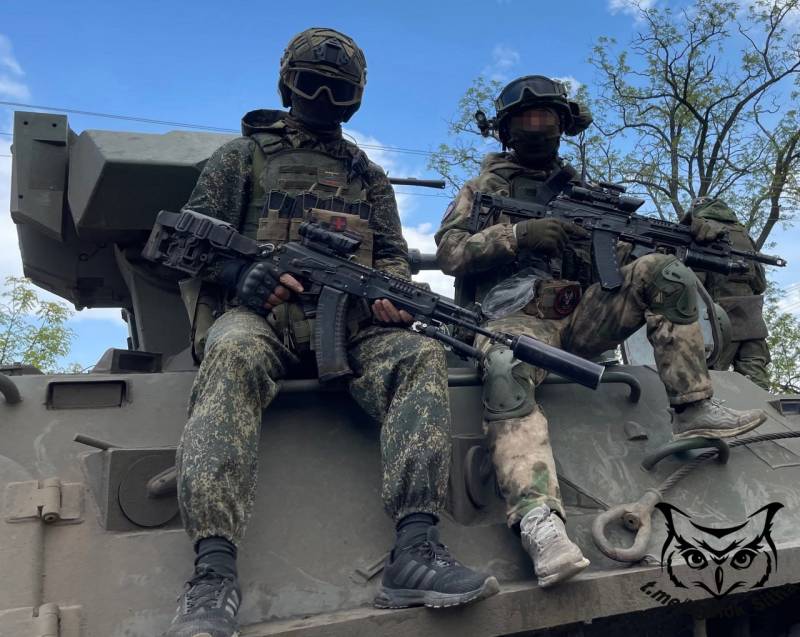
Soldiers in the Northern Military District zone with tuned AK-12s. The fighter on the left has a DLG TACTICAL butt and a 60-round PUFGUN magazine (one might say a hit at the front) mounted on his machine gun. A standard PBS for the AK-12 exists, but here we just see a civilian “can.” Source: Telegram channel “Sith Corner”
If we're talking about weapons tuning as about making changes to a small weapon with a factory configuration in order to increase its efficiency and make it more convenient to use, then this phenomenon has existed, probably, as long as the weapon itself has existed in the “factory configuration.” After all, you always want something better, something more comfortable for yourself, and it doesn’t matter what we’re talking about: a car, a chair or a machine gun. It’s clear that there is no point in talking about adjusting parts, the so-called “peeling” in parts; these are things that are completely invisible from the outside; we are interested in external tuning.
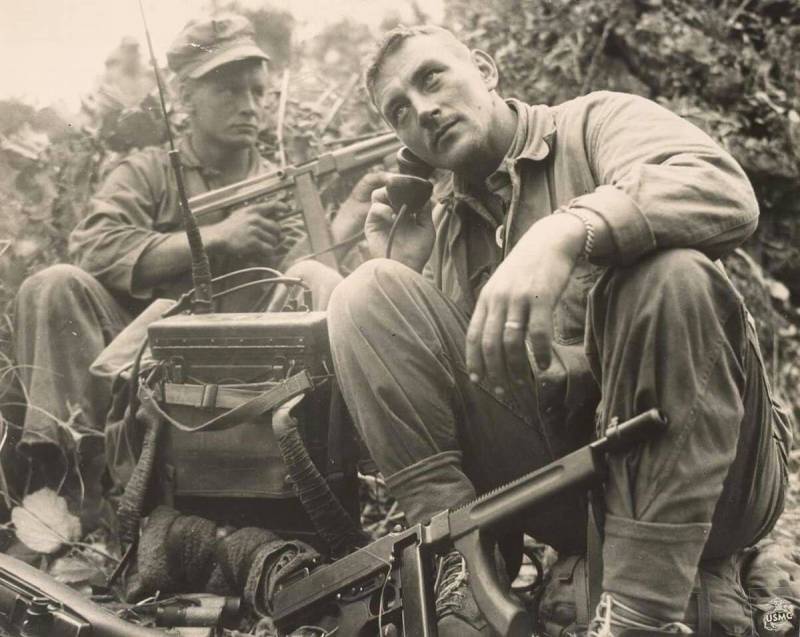
Weapon tuning from the Second World War. Thompson system submachine guns, starting with the M1928A1 model, were equipped with a front forend rather than a handle. But many fighters returned the handle to the machine gun using improvised means. Here, two soldiers of the US Marine Corps “tricked” homemade handles onto the forends of submachine gun models M1928A1 and M1.
Weapon tuning also existed in the warring Soviet Army, certainly in the late Soviet period. As an example, soldiers who were not entitled to a GP-25 grenade launcher according to the regulations could readily “expropriate” a butt pad somewhere from the grenade launcher’s accessory kit and install it on the butt. The “galosh” pleasantly reduced the recoil sensitivity of Kalashnikov assault rifles.
Weapon tuning, which is more familiar to us now, has existed in various Russian law enforcement agencies for more than a year or even the first ten years. Everyone has probably at least once seen photographs of fighters from at least the FSB TsSN with tuned weapons. In 2014, during the events in Crimea, people interested were able to see that weapon tuning did not bypass army special forces units.
What and how is being tuned now, and most importantly - what is it: an urgent need or a tribute to weapons fashion?
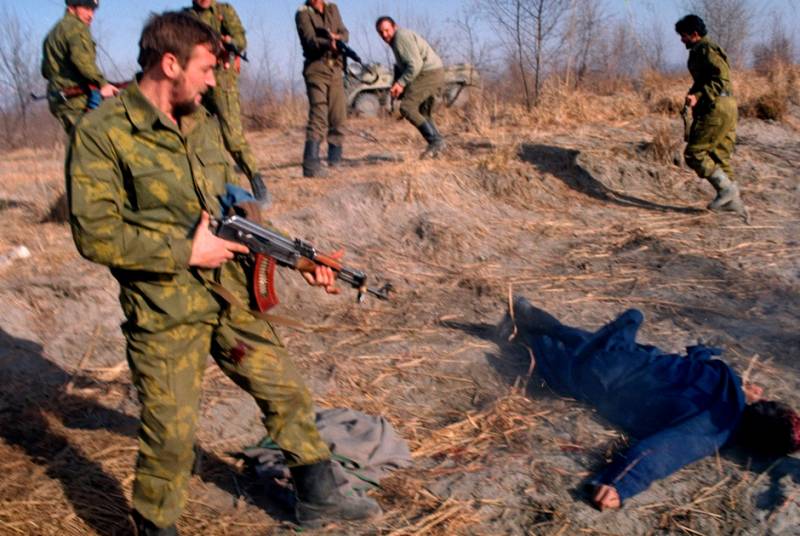
It is clearly explained to the Islamic fundamentalist that killing people on religious grounds is not good. Civil war in Tajikistan. In the photo we see an example of a fairly common late Soviet/early Russian field weapon tuning. In a standard magazine, a “window” was cut out for the machine gun, which made it possible to visually control the number of remaining cartridges.
If you talk to fighters and humanitarian workers who regularly visit the LBS, the most widespread and popular tuning is “bank” and “kamok”.
Let's start with the last one.
In essence, this is simply applying a semblance of camouflage to a weapon, or simply repainting the entire weapon or its parts in a color different from the standard coating. Sometimes various masking self-adhesive tapes are used.
In the USSR, a simple motorized rifleman was not interested in the issue of visibility of an individual small arms weapon to the enemy, literally at all. It was more important to saturate the army with modern small arms as quickly and cheaply as possible. Therefore, Soviet small arms shine with bright parts made of polyoxybenzylmethylene glycol anhydride, varnished wood, etc.
This can be fixed quite simply - a couple of cans of paint from any auto store or construction store, which do not cost much more than a can of tonic soda with sugar, caffeine and taurine, a stencil - even from a leaf plucked from a tree, 10 minutes, and here you have a machine gun or a machine gun in camouflage
Yes, there are specialized weapon paints that are well resistant to external physical and temperature influences, factory stencils for applying camouflage and even workshops that offer such services, but we are talking about mass items and those that are available to almost any fighter.
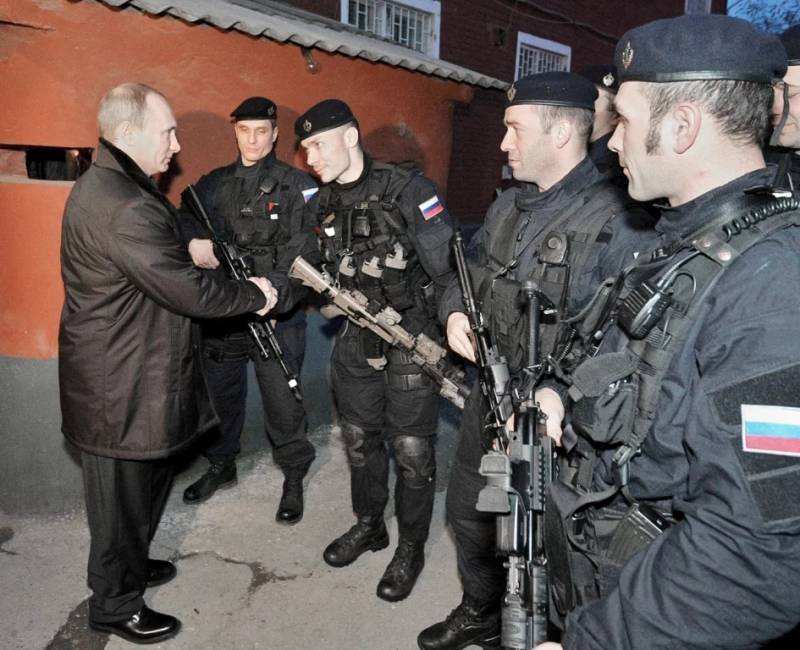
Vladimir Vladimirovich with officers of Group “A”, Gudermes, 2011. Tuning includes Aimpoint and EOTech sights, a stock from the Special Products Factory, Magpul magazine loops, AN/PEQ-2 laser target, etc.
With the “can” everything is a little more complicated.
This more than civilian term hides army SBS (silent firing devices) or, much more often, DTK (muzzle brake compensator) of a closed type. The latter do not legally belong to SBS and PBBS (silent and flameless shooting devices), although de facto they perform the same role.
It is the fact that they are absolutely legal for civil circulation that has ensured their wide distribution and low cost. There are a countless number of companies that produce civilian “cans” that are quite suitable for military weapons, and sometimes specially made for them. It gets to the point that the domestic market for weapons tuning responds to requests from the military and law enforcement agencies faster than the relevant departments.
When the newest AK-12 assault rifles began to arrive in the troops, many complained that no one in the units had ever seen the standard BBBS for this assault rifle, and those who did have to use it complained about the inconvenient mounting. It took domestic private gunsmiths only a few months to launch a civilian “can” of their design for the AK-12 onto the market...
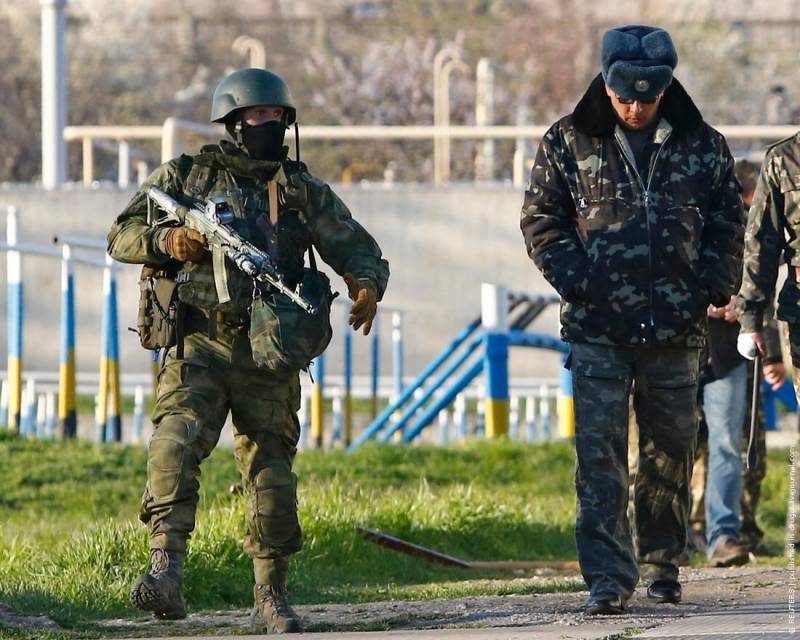
“The defeated male leaves,” Crimea, 2014. The fighter’s machine gun is equipped with an EOTech sight, a Magpul stock, etc.
Next come various “attachments” for standard army small arms – machine guns, machine guns and sniper rifles. Here, in general, the army itself set the trend, so to speak. Even before the SVO, the troops received modernization kits for the AK-74 and AK-74M - KM-AK assault rifles. In addition, there are a huge number of different “body kits” and their manufacturers, including domestic ones, such as the famous “Zenitka”. So there is plenty to choose from.
If previously only the lazy did not shout about the dubious ergonomics of the AK, and this moment was really a problem, now this issue can be almost completely nullified by various “body kits,” which the soldiers at the front are successfully demonstrating.
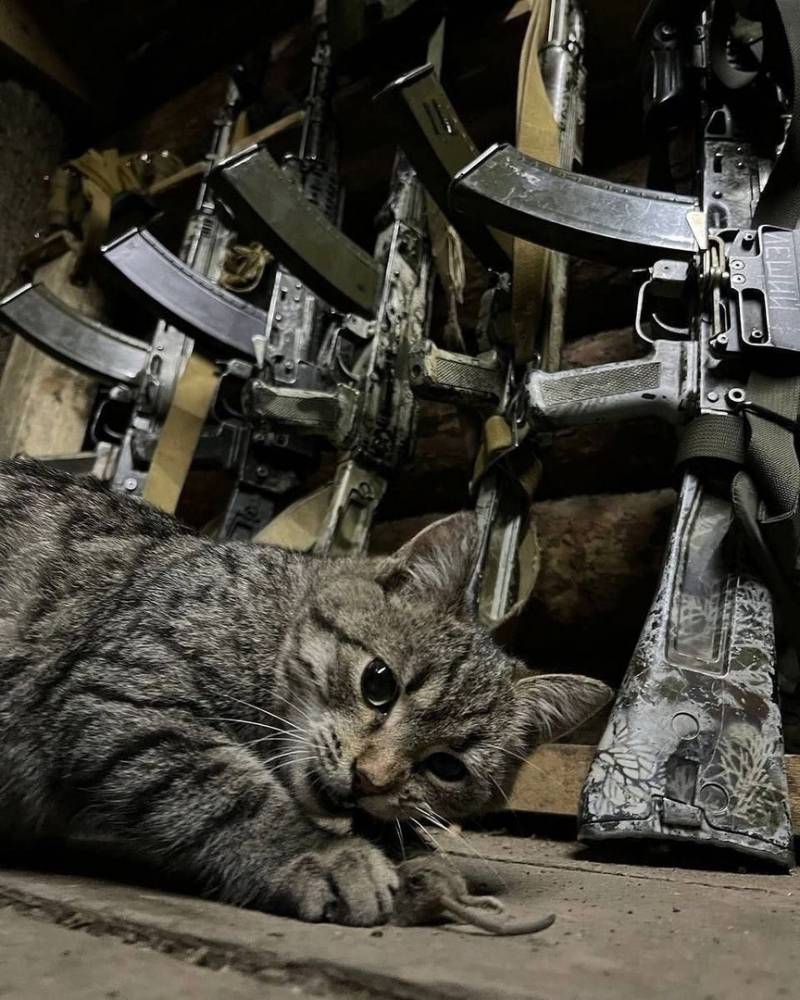
An example of the cheapest and at the same time massive weapon tuning in the Northern Military District zone is the application of “camouflage” to the small arms of fighters. By the way, seals are now actively helping to fight a new scourge in the North-West region - incredibly prolific mice, but this, as usual, is a completely different matter story.
Well, the next point smoothly follows from the previous point – sights. Before the advent of the AK-74M, an assault rifle with the ability to install a sight was a separate model with its own index. Actually, the AK-74M became a milestone, since every fighter had the opportunity to install optics on his machine gun.
But this is only in theory, since the mount was quite specific - a dovetail mount on the side of the receiver, and many soldiers had not even seen military sights that could be installed on the same machine gun, although the same PSO- 1 was installed on AK and RPK back in Afghanistan. Here the “body kit” changes everything. Any machine gun/machine gun can be converted into a rifle complex that can solve a wide range of tasks at any time of the day and in any weather.
One of the hits can be called a collimator sight from Holosun. There are cheaper ones, but they do not satisfy the military in terms of reliability characteristics. There are, of course, more expensive ones; the upper price level probably practically does not exist. And here the crowning glory is the thermal imaging sight. Now we can actually say we are watching a war drones and thermal imagers.
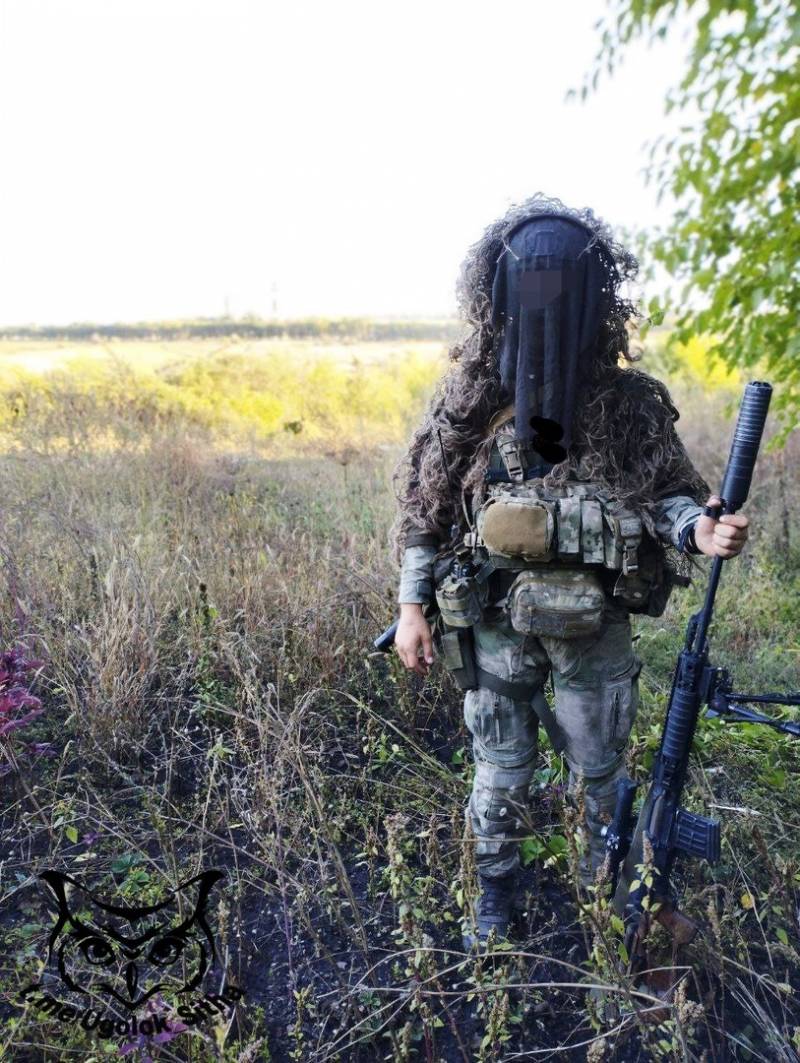
The topic is completely independent and worthy of a separate publication - tuning sniper weapons. Here, tuning, especially sights, almost always costs more than the actual weapon being tuned.
So why now and on such a scale?
Well, as usual, several factors came into play.
The first and probably the main one is the scale of the conflict itself. There has been nothing like this in the modern history of Russia.
Secondly, there was already a basis for such a phenomenon. This includes a huge number of manufacturers of weapon tuning, and the not-yet-massive community of “tactical specialists” and “practitioner” sports shooters that existed in Russia at that time, plus weapon tuning for some law enforcement agencies has become the norm for a long time.
Well, financial opportunities. There is quite a decent salary here, not always and not everywhere, but still, the volunteer movement is more active than ever (here, probably, in scale and scope it can only be compared with the Great Patriotic War) helping soldiers at the front.
And all this, falling into one cauldron, gave rise to such a phenomenon as weapon tuning at the front.
Is it good? Definitely yes.
This increases and elevates the capabilities of weapons to a new level, which are often quite limited for a number of reasons (ergonomics, outdated sighting devices, etc.).
Is there an element of army fashion and front-line flair here? Also often yes.
Everyone has probably seen photos of fighters from units that are unlikely to ever come into direct fire contact with the enemy (drone operators, artillerymen, etc.), but actively flaunting “cans”, camo and body kits.
And you also need to be able to apply tuning correctly and understand why it is needed. You still need to know how to use the same “can,” because during intense shooting it can become so hot that it will literally glow, unmasking the fighter.
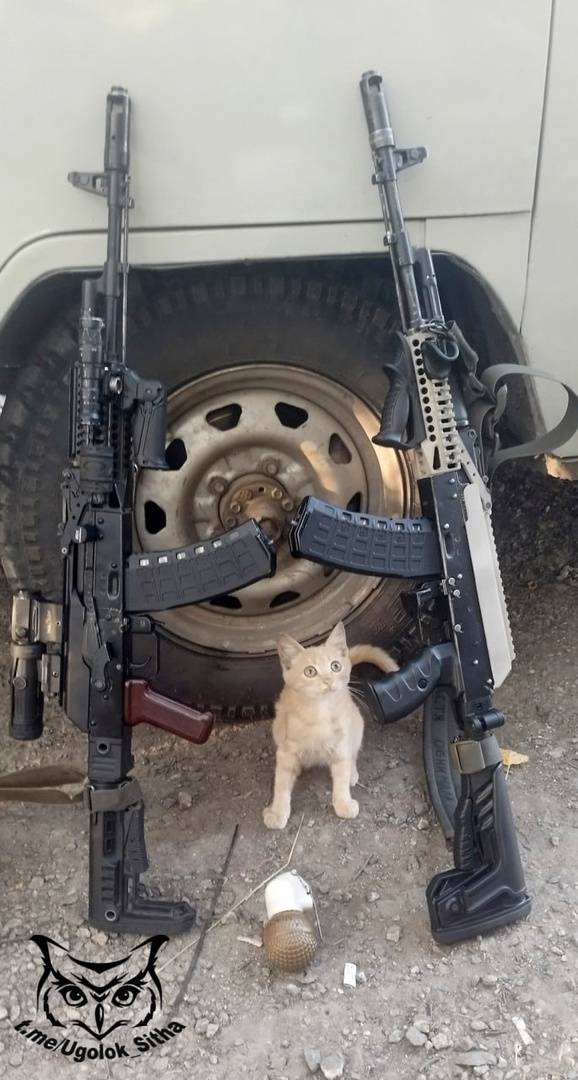
Two AK-74s of our fighters in the Northern Military District zone in “heavy” tuning, mainly from the domestic “Zenitka”. And a cat. By the way, an interesting point, both machine guns with new magazines from Izhmash, which went to the troops along with the AK-12. And if the machine gun itself is already clear that it was received by the troops frankly crude and earned mixed reviews, then the new model magazine became a real hit among the soldiers.
Why this phenomenon appeared not thanks to, but in spite of, and why the same army modernization kits did not become a truly massive phenomenon in the troops is a largely rhetorical question for another publication.
Information